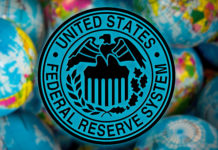- Personal income declined by 13.1% month-on-month in April, reporting a slightly better performance than the 14.8% decrease anticipated by the consensus. Not surprisingly, the decline was due to the pullback in other government social benefits, which account for roughly $340 billion in stimulus checks distributed last month. Wages and salaries increased by solid 1.1%, while unemployment insurance benefits declined by 8.5% on the month.
- Removing inflation and taxes, real disposable income declined by 15.1% month-on-month, down 4.4% relative to this time last year, when the first round of stimulus checks was disbursed.
- Personal spending grew 0.5% month-on-month in April, on par with the consensus call.
- Spending on services rose by 1.1% in April, decelerating slightly from the downwardly revised 2.1% gain of the previous month. Gains were led by recreation services and food services & accommodations.
- Goods spending declined by 0.5% in April, with non-durables dropping by 1.3% m/m
- The personal saving rate declined from the 27.7% last month to 14.9%, roughly 7 percentage points above the pre-pandemic benchmark.
- The overall PCE price deflator rose by 0.5% m/m and 3.6% y/y in April, softer on a monthly basis than the consensus (0.6%) but stronger on a yearly basis (3.5%). The Fed’s preferred measure of inflation – core PCE price index – rose by 0.7% m/m and 3.1% y/y, a hair above the consensus expectation for 0.6% m/m and 3.0% y/y respectively.
Key Implications
- Today’s report shows consumption shifting away from goods and back toward services, signaling a return to “normalcy”. Over the course of the pandemic, the services share of overall consumer spending declined from 70% to 65%. It is now moving back into the driver’s seat. This reflects the broader reopening of the economy – April was the first full month when a composite measure of restrictions (school/workplace closures, travel bans etc.) eased relative to the previous year’s average.
- At 3.1%, core PCE price inflation is looking hot. Yet, measured against the weakest point last year, this pace is unlikely to be sustained long. Still, with signs of stronger economic growth and inflation likely to remain above 2%, it is becoming increasingly difficult for the Fed to avoid at least talking about talking about removing monetary policy accommodation.














